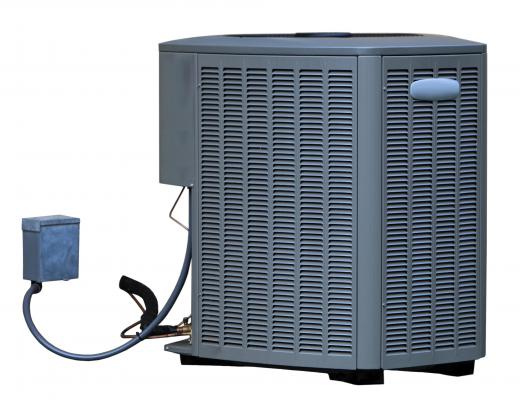Maintaining the proper refrigerant charge is a vital aspect of keeping a cooling unit running smoothly. If the charge is too low, then the evaporator capacity is reduced, and if it is too high, then the excess might back up into the condenser. Regardless of what type of cooling system is being used, the best way to maintain the right refrigerant charge is to constantly monitor it and make changes when necessary. Depending on the type of system, the frequency of the checks might vary, as will the methods of checking it.
The best way to maintain the refrigerant charge is based largely on what type of air conditioning system is being used. In the best-case scenario, the system has a means of directly indicating the refrigerant levels. This normally is through level sight glasses or a liquid level test cock, depending on the age of the unit.

A successful method for checking the refrigerant levels on all types of compression cooling equipment is measuring discharge and suction pressures. Larger machines tend to have readily visible gauges that indicate the evaporator and condenser pressures. Smaller machines might require manual testing.
In chillers, an evaporator liquid line sight glass likely will be the best way to check and maintain the refrigerant charge. If there are bubbles in the sight glass, then there is not enough refrigerant to keep the system line full enough. The bubbles are not a foolproof method, however, if the glass is located upstream of an obstructed filter.
When dealing with a direct-expansion chiller system, the refrigerant charging levels can be checked only by looking at the gas leaving the evaporator. If there is a low charge, then the gas will leaving at high levels. The gas would be considered to be superheated.
In systems that have air-cooled condensers, such as heating, ventilation and air conditioning (HVAC) systems, the charge can be noted by checking for excessive sub-cooling of the refrigerant. Sub-cooling is when the liquid refrigerant falls below the saturation temperature. This test is best done by experienced technicians because the difference in temperatures can be very subtle.
As a last resort in monitoring the refrigerant charge, bleeding refrigerant from the system can be done. After the operating pressure drops, the additional refrigerant can be added. This method should not be done when environmentally damaging refrigerants are being used.
